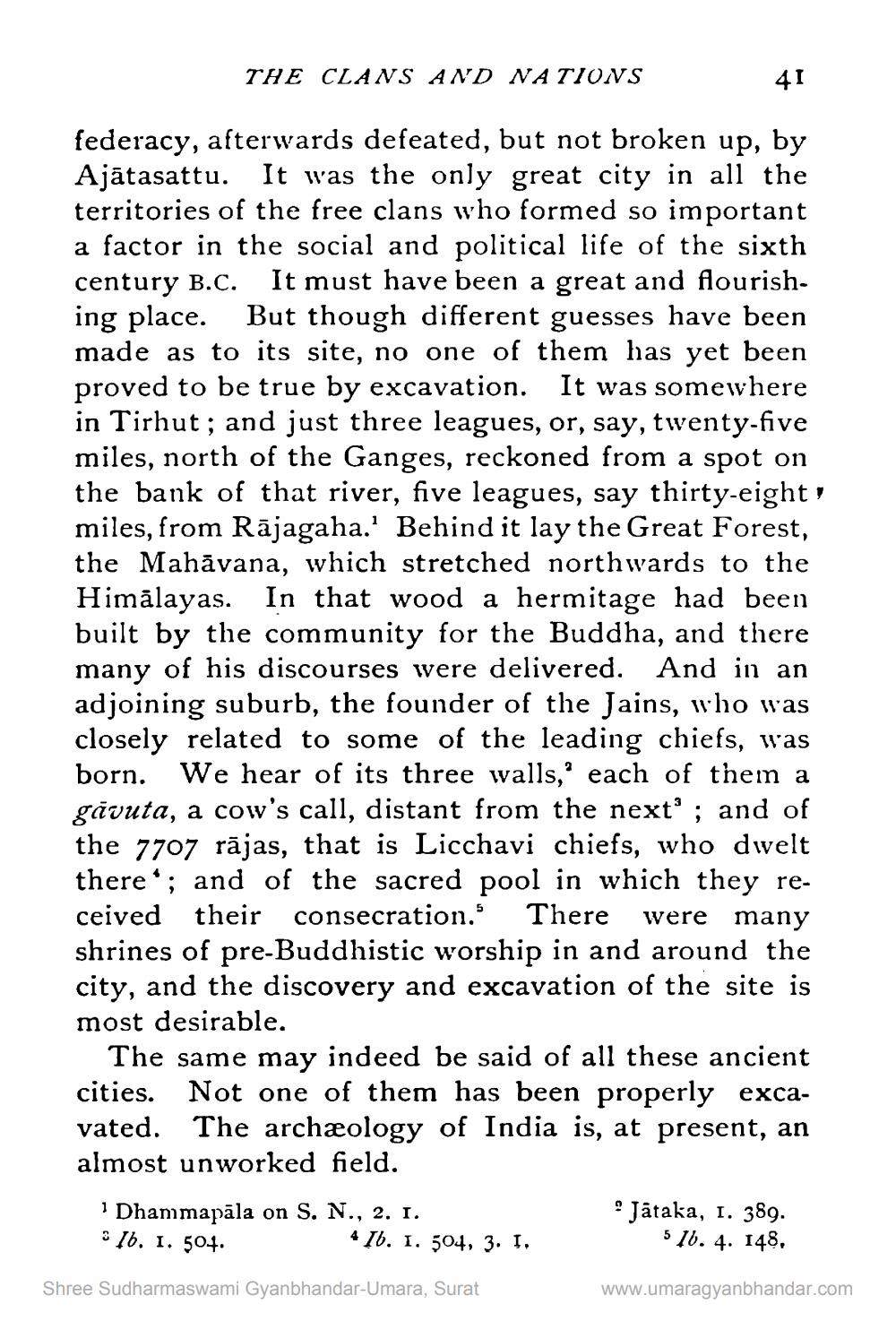________________
THE CLANS AND NATIONS
41
federacy, afterwards defeated, but not broken up, by Ajātasattu. It was the only great city in all the territories of the free clans who formed so important a factor in the social and political life of the sixth century B.C. It must have been a great and flourish. ing place. But though different guesses have been made as to its site, no one of them has yet been proved to be true by excavation. It was somewhere in Tirhut; and just three leagues, or, say, twenty-five miles, north of the Ganges, reckoned from a spot on the bank of that river, five leagues, say thirty-eight: miles, from Rājagaha.' Behind it lay the Great Forest, the Mahāvana, which stretched northwards to the Himālayas. In that wood a hermitage had been built by the community for the Buddha, and there many of his discourses were delivered. And in an adjoining suburb, the founder of the Jains, who was closely related to some of the leading chiefs, was born. We hear of its three walls,' each of them a gāvuta, a cow's call, distant from the next; and of the 7707 rājas, that is Licchavi chiefs, who dwelt there*; and of the sacred pool in which they received their consecration. There were many shrines of pre-Buddhistic worship in and around the city, and the discovery and excavation of the site is most desirable.
The same may indeed be said of all these ancient cities. Not one of them has been properly excavated. The archæology of India is, at present, an almost unworked field. 1 Dhammapāla on S. N., 2. I.
Jätaka, 1. 389. . 16. I. 504 4 Ib. I. 504, 3. I.
5 Ib. 4. 148.
Shree Sudharmaswami Gyanbhandar-Umara, Surat
www.umaragyanbhandar.com




